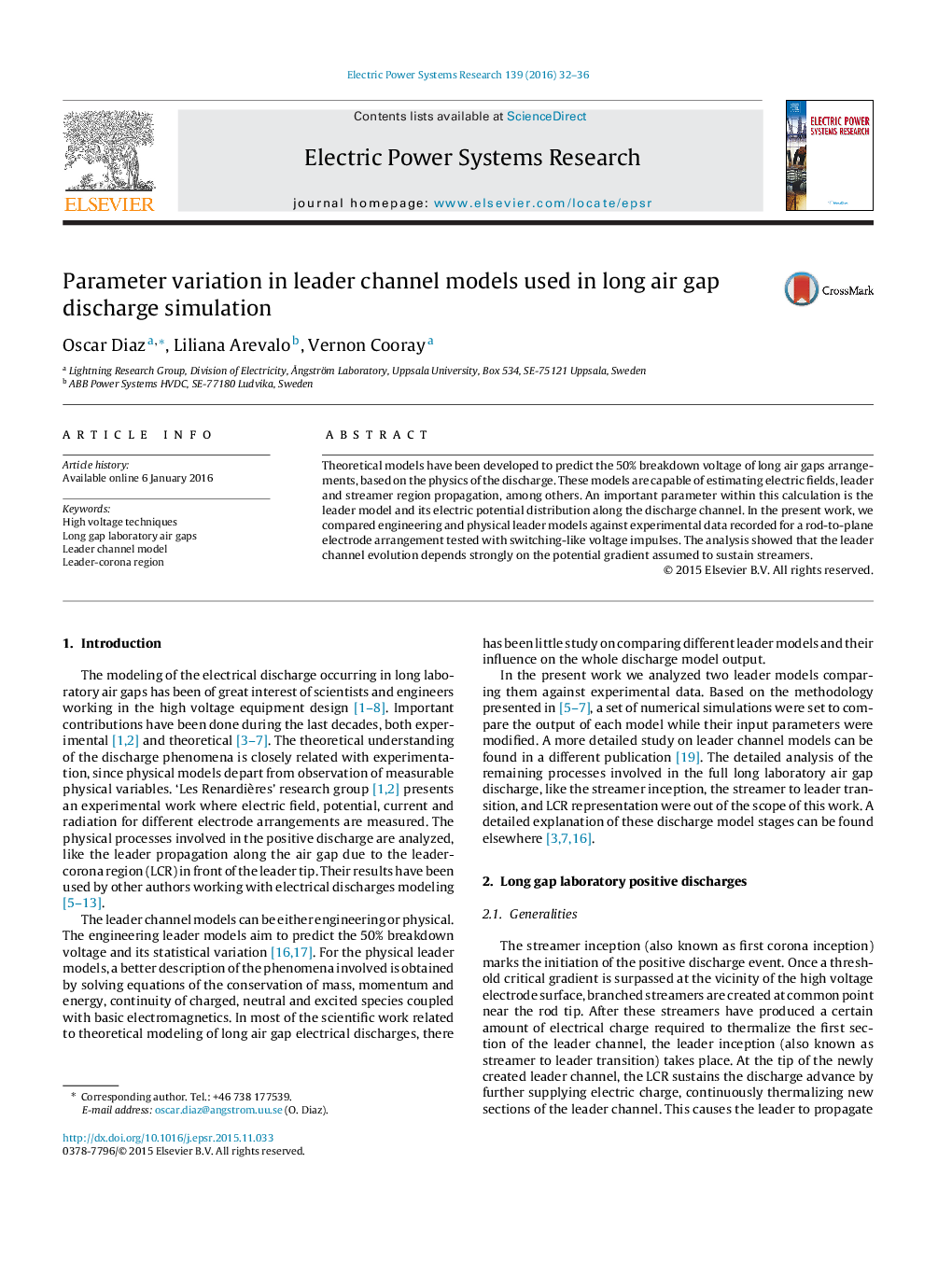| Article ID | Journal | Published Year | Pages | File Type |
|---|---|---|---|---|
| 704182 | Electric Power Systems Research | 2016 | 5 Pages |
•Two leader channel models used in long air gaps were analyzed and compared against experimental data.•The model input parameters were modified to evaluate its effect on output variables.•The constant potential gradient ESC affects in both models the LCR extension.•The reduction of E∞ in the Rizk model allowed the LCR to elongate further.•In the Lalande model, qL affected mainly the leader tip potential.
Theoretical models have been developed to predict the 50% breakdown voltage of long air gaps arrangements, based on the physics of the discharge. These models are capable of estimating electric fields, leader and streamer region propagation, among others. An important parameter within this calculation is the leader model and its electric potential distribution along the discharge channel. In the present work, we compared engineering and physical leader models against experimental data recorded for a rod-to-plane electrode arrangement tested with switching-like voltage impulses. The analysis showed that the leader channel evolution depends strongly on the potential gradient assumed to sustain streamers.
